Top 10 Interesting Facts about Orangutans
The rainforests of Indonesia and Malaysia are home to the big apes known as orangutans. They were once widespread throughout Southeast Asia and South China, ... read more...but are now only present in a small portion of Borneo and Sumatra. Originally thought of as one species, orangutans are now classified in the genus Pongo. Do you have any curiosity about this animal? Let's follow Toplist to discover some interesting facts about orangutans.
-
The largest arboreal animal in the world is an orangutan, which in Malay means "man of the forest." Great apes called orangutans are extremely intelligent and share 97 percent of our genes. The distribution of these creatures is now largely confined to the rainforests of Borneo and Sumatra, having previously been spread over South China and Southeast Asia. In 1996, orangutans, which were hitherto thought to be a single species in the genus Pongo, were split into two species: the Bornean orangutan (Pongo pygmaeus) and the Sumatran orangutan (Pongo abelii). In 2017, a third orangutan species called the Tapanuli orangutan (P. tapanuliensis), was discovered.
Only Borneo and Sumatra are home to these giant apes in the wild. The three species of orangutans are all in grave danger. There are thought to be less than 800 Tapanuli orangutans, slightly over 100,000 Bornean, and less than 14,000 Sumatran orangutans left in the world, according to estimations. Although they have similar-looking fluffy ginger fur, Bornean orangutans have larger cheeks and darker red coats than their Sumatran relatives. However, they do share several traits in common. Mature male Sumatran orangutans have a beard and mustache, while adult females also have beards.
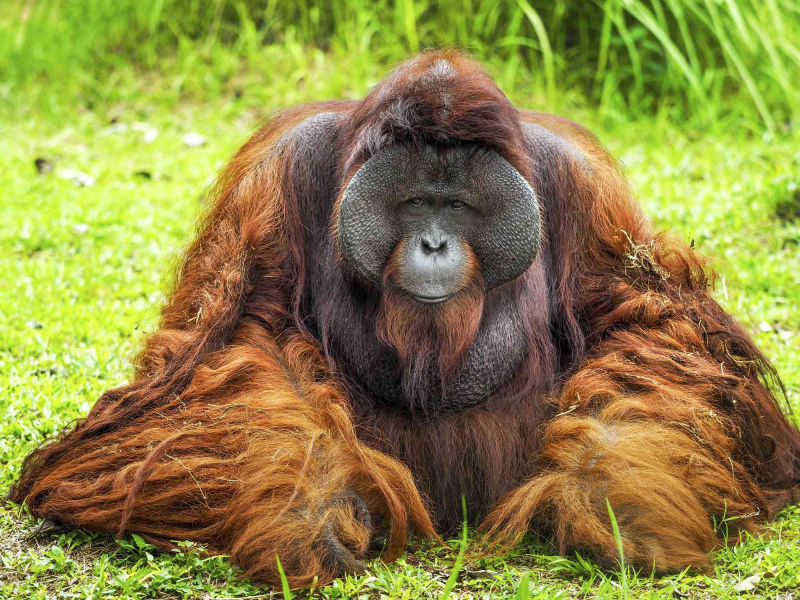
Photo: treehugger 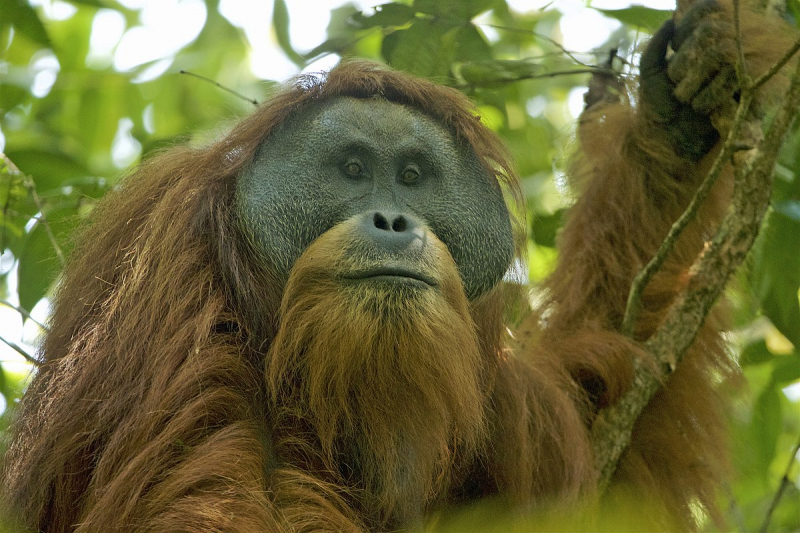
Photo: wikipedia -
One of the interesting facts about orangutans is they are the heaviest tree-dwelling animal. Male Bornean orang-utans (Pongo pygmaeus) and Sumatran orang-utans (P. abelii) are usually 1.5 m (5 ft) tall and weigh 83 kg (183 lb). They have opposable toes on their feet and can swing between trees with an arm reach of about 2 meters (6 feet). They eat fruit, tiny leaves, and tree bark. Females typically make nests in trees because they weigh less than adult males (37 kg or 81 lb), who typically rest on the ground.
The majority of an orangutan's life is spent swinging through the trees, therefore they require huge tracts of forest to find enough food and partners. The main dangers to orangutans are hunting and deforestation. Between 2010 and 2030, Borneo alone is expected to lose 220,000 km sq. of forest. This is a sizeable portion of its whole landmass and is larger than the entirety of the United Kingdom. Climate change is also increasing the frequency of forest fires, which is mostly for agriculture and infrastructure (like highways). The good news is that Borneo's deforestation appears to be slowing down, according to studies. Furthermore, stricter standards for protecting forests are being established in Malaysia and Indonesia.
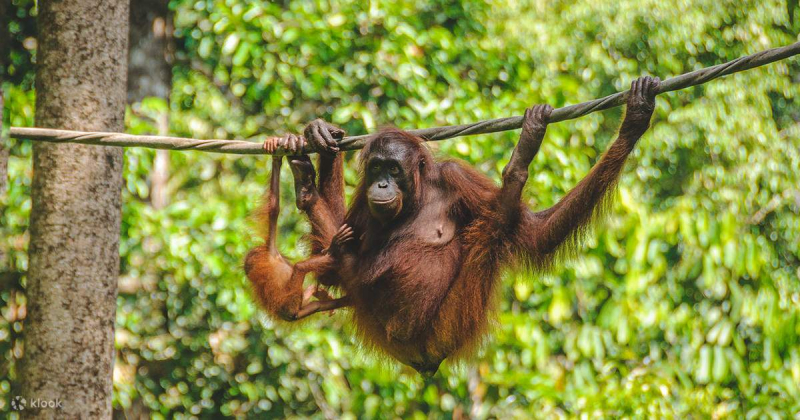
Photo: klook 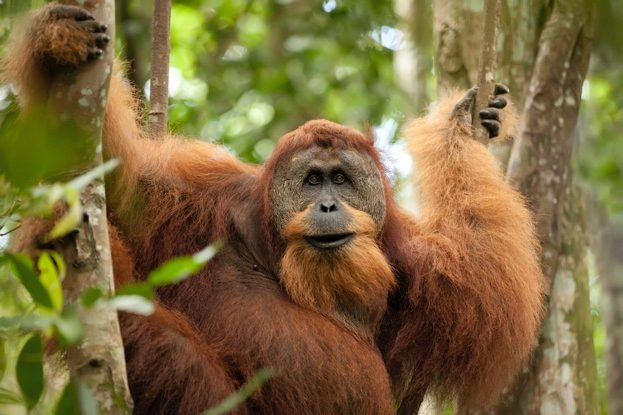
Photo: discoverwildlife -
The length of an orangutan's arm is 1.5 times that of their leg. An adult male orangutan's arms may be as long as 213 cm (7 ft.) when spread out to the sides. They can swing from tree to tree because of their powerful arm muscles, which also help their shoulders sustain their whole weight. An orangutan is around seven times powerful than a human, yet not as strong as a gorilla.
Orangutans have arms that are longer than their legs and shoulders that are wider than their hips because they travel through the jungle more with their arms and shoulders than with their legs and hips.
Orangutans' legs are smaller than their arms since they are not utilized for swinging and do not bear the weight of the animal. Orangutans have extremely movable hips. Their joints can fully rotate, which enables them to move their legs at practically any angle. Orangutans can jump, twist, grab, and balance as they swing from branch to branch thanks to their flexible knee and ankle joints.
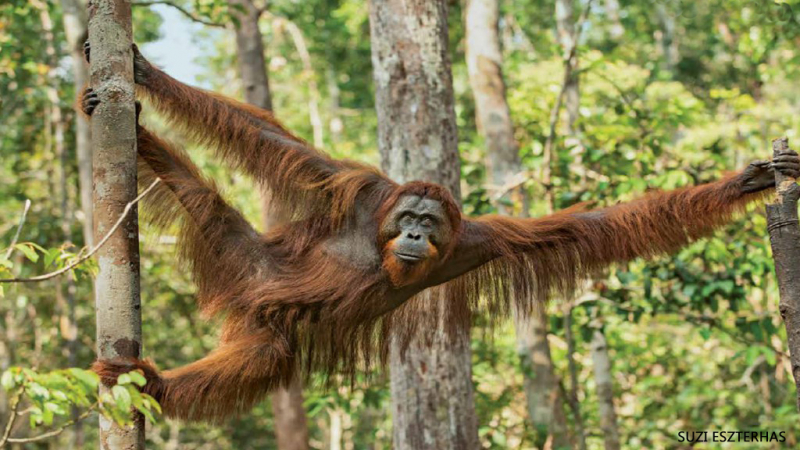
Photo:rangerrick 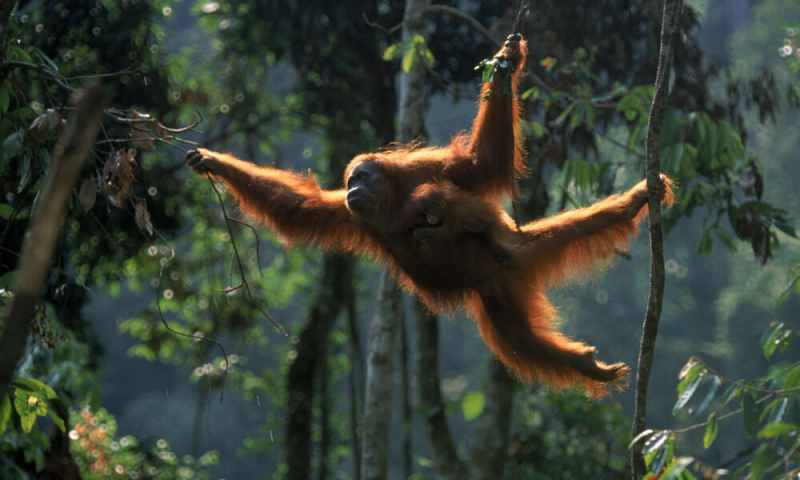
Photo: worldwildlife -
The relationship between orangutan mothers and their young in Sumatra, Indonesia, was examined in a recent study conducted by the Max Planck Institute of Animal Behavior in Konstanz, Germany. Researchers discovered that orangutan moms assist their young in learning by adapting their behavior when they are out foraging to fit their age and capabilities. This study, according to the researchers, provided the first concrete proof yet that orangutan moms actively participate in their young orangutans' acquisition of new skills.
Over 200 different foods, many of which need to be prepared in multiple phases before consumption, must be recognized and processed by orangutans during their early development. For instance, while the majority of flowers and leaves can be consumed raw, the nutritional portions of bark must first be removed off the tree and scraped with teeth. Even the use of equipment like sticks is necessary to consume the most challenging meals, such as honey from bee colonies. The researchers claim that young orangutans pick up these sophisticated skills by watching their moms eat.
Orangutans in their early years remain with their mother until they are about 7 years old. Infants are so devoted to their mothers that they sleep in her nest and ride on her until they learn how to survive independently. Orangutans only give birth to the young once every 7 to 9 years, which is the longest birth interval of any terrestrial mammal, because of their steep learning curve.
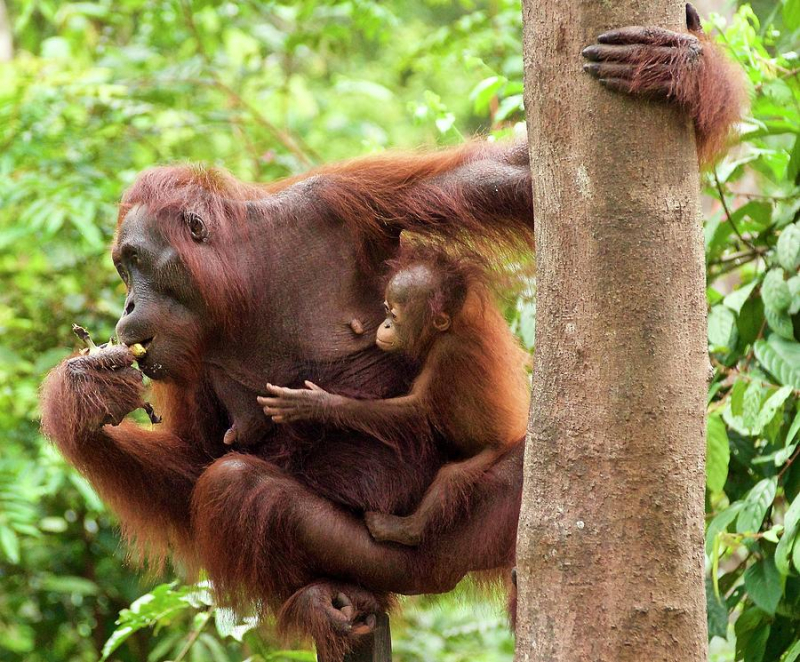
Photo: pixels 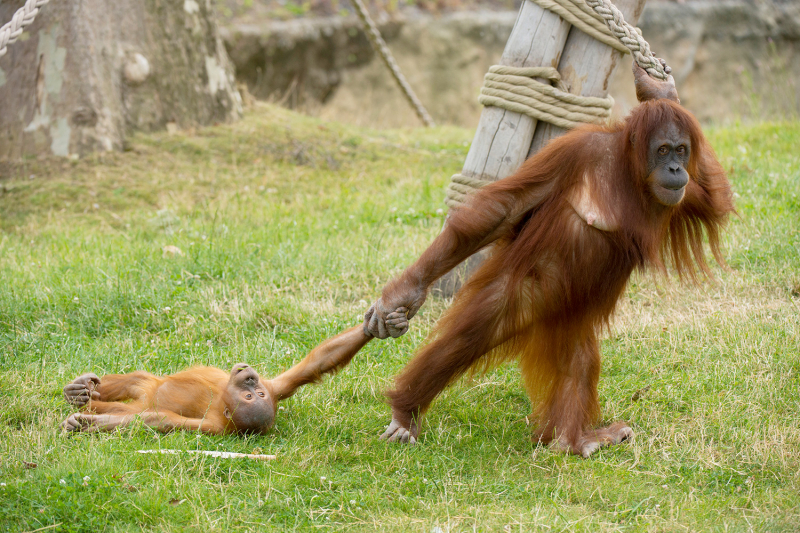
Photo: people -
Orangutans prefer to feel cozy. One of the interesting facts about oragutans is they construct nests largely to have a comfy place to sleep, much like how humans construct beds. Every night, they build a platform for sleeping or a nest. An orangutan builds its nest in about ten minutes by gathering several large branches, utilizing smaller branches for a mattress, and weaving more flexible branches into the framework. Sometimes they add a roof when it's raining. Every night, wild orangutans will either construct a brand-new nest or return to an older one. They frequently spend the daytime in their nests and sleeping.
The scientist really utilizes orangutan nests, which they build each night to sleep in, to determine how many of them are present in a certain location. An interesting detail about orangutan nests, and night nests, in particular, s that the location of an orangutan's nest can reveal which other orangutans they like to associate with, providing the primate staff some understanding of the orangutans' interpersonal interactions.
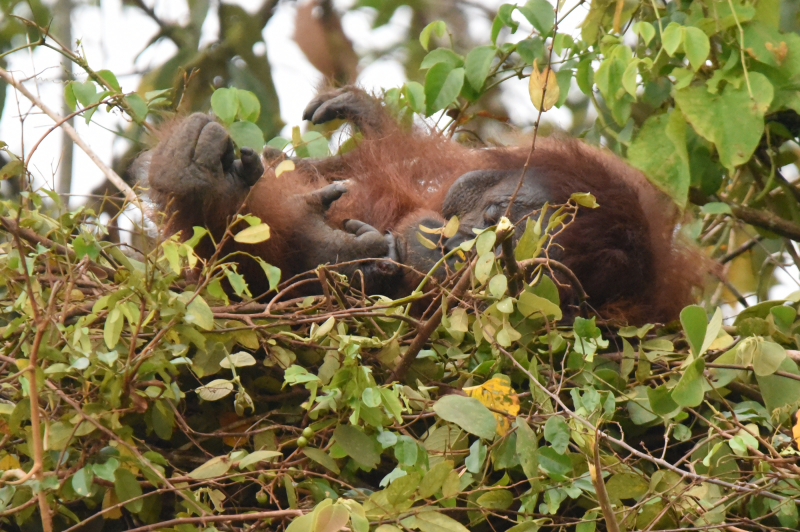
Photo: wikipedia 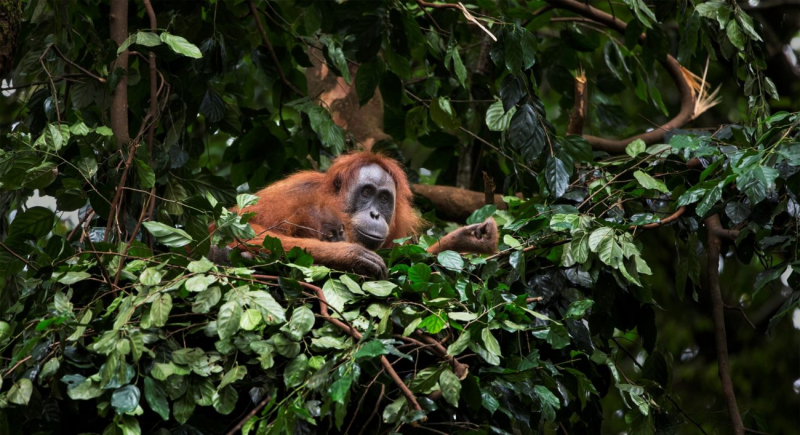
Photo: orangutans-sos.org -
Orangutans are among the most intelligent and endangered apes, and they share 97 percent of our DNA. They regularly employ a range of complex tools in the environment, have long-term memory akin to humans, and build elaborate sleeping nests every night in the form of leaves and branches. In their natural environment, the evergreen rainforests of Borneo and Sumatra, orangutans must take into account a number of variables at once, including the likelihood of finding ripe fruits, the accessibility, and distance to food sources, and the availability of tools to unlock sources of extractable food. It is still unknown how orangutans adjust their choices when using tools and how many variables they can consider simultaneously while choosing wisely.
Although humans and orangutans are similar at the DNA level, a comparison of the primate genome sequences revealed that orangutans have evolved much more slowly than chimpanzees and humans. The orangutan genome has fewer large DNA rearrangements than its chimpanzee and human counterparts.
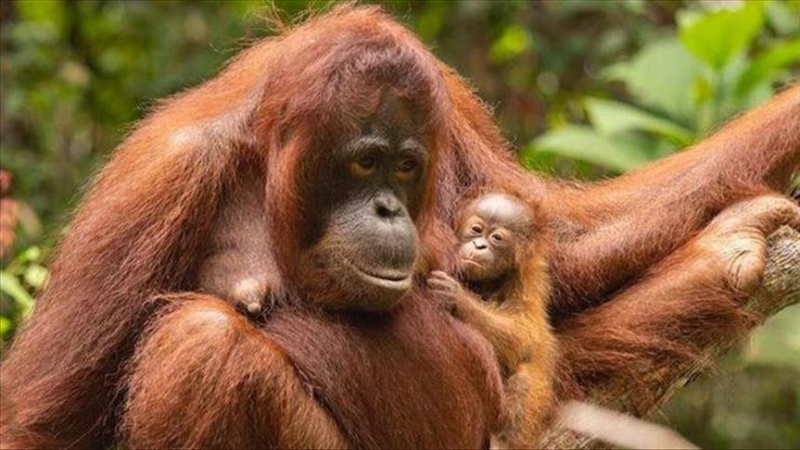
Photo: Turkishpress 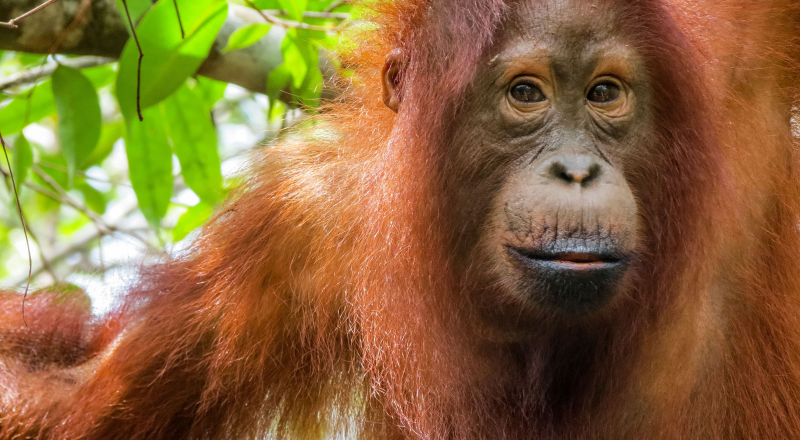
Photo: nature -
Bark, leaves, flowers, a variety of insects, and, most significantly, more than 300 different kinds of fruit make up their diet. The moms must instruct the infants on what food to consume, where to locate it, in which trees, and at what times of the year. Orangutans must have a very accurate mental map of the forest and be familiar with the many tree species' fruiting periods. (This avoids wasting precious energy getting to a certain fruiting tree whose fruits won't develop for a while and searching for fruit trees at random.) The infants will eventually need to know hundreds of different plant and tree species, which ones are edible, and how to prepare them; some are extremely challenging to consume due to their protective shells and spines.
In contrast to most primates, the orangutan is relatively autonomous, since food is frequently sparse in the rainforest. When there is plenty of food available, orangutans may take advantage of the chance to interact with one another and form small groups.
While almost all the food they consume comes from the trees, they also use other resources to supplement their diets. The Tapanuli orangutan has been seen gathering caterpillars for its own use, for instance. Rain falls frequently, filling the leaves and supplying them with drinking water. They chew leaves to create a sponge to absorb up water in tree cavities when getting water is difficult.
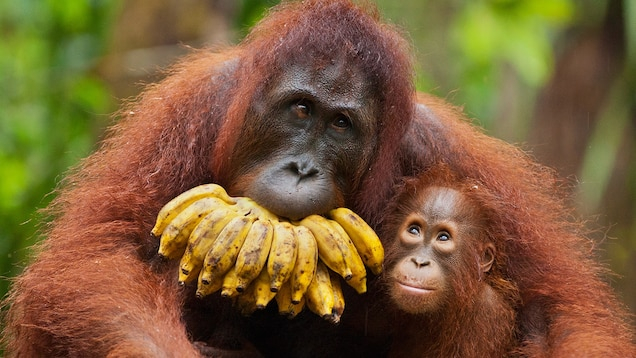
Photo: kids.nationalgeographic 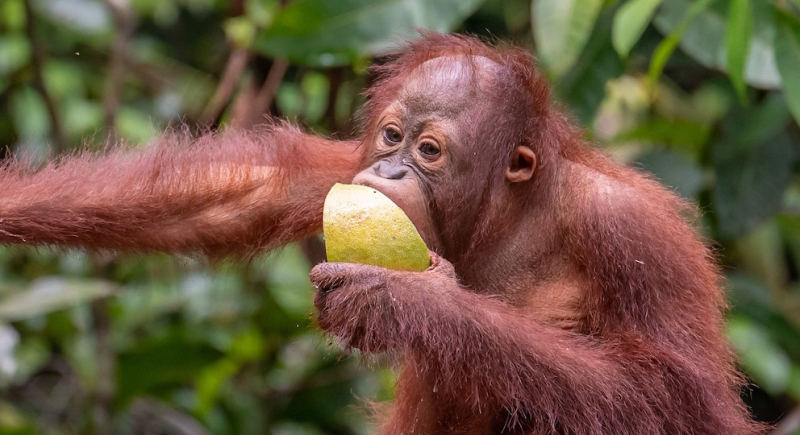
Photo: orangutanfoundation -
Males and females of orangutans differ significantly in size and shape because they are sexually dimorphism. Their body size and face morphology are where the most obvious differences may be detected. Men frequently weigh more than 200 pounds (90 kg), whereas women are between one-third and one-half their size.
The fact that males have larger cheek pads or flanges may be the distinction between completely developed males and females that is most noticeable. Subadult males and fully adult males are the first and second maturation phases for male orangutans, respectively. Subadult males often have narrower bodies, shorter hair than mature males, no cheek pads or flanges (they are unflanged), and smaller neck sacs. These secondary sexual traits make guys more appealing to adult females and help them find partners.
Male orangutans also have a neck sac, which they utilize to vocalize, and long, dense hair that makes them look even bigger. The sound produced by the throat sac is quite distinctive and recognizable and reverberates across the forest. The "Long Call" is what they use to locate females, alert them to their presence, or warn other males to stay away.
Until they come upon a female who is willing to mate, the males usually remain alone. To guarantee successful mating, they will remain with the female for a few days, but they will soon return to living alone. Males will typically travel on the ground more than females because of their enormous size. The orangutan is the only ape species with hair that ranges in color from orange to reddish brown.
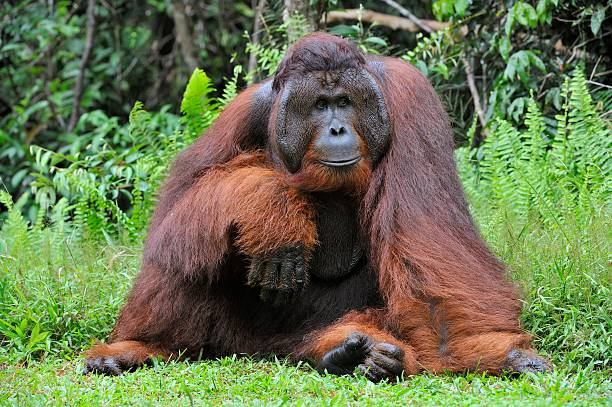
Photo: istock 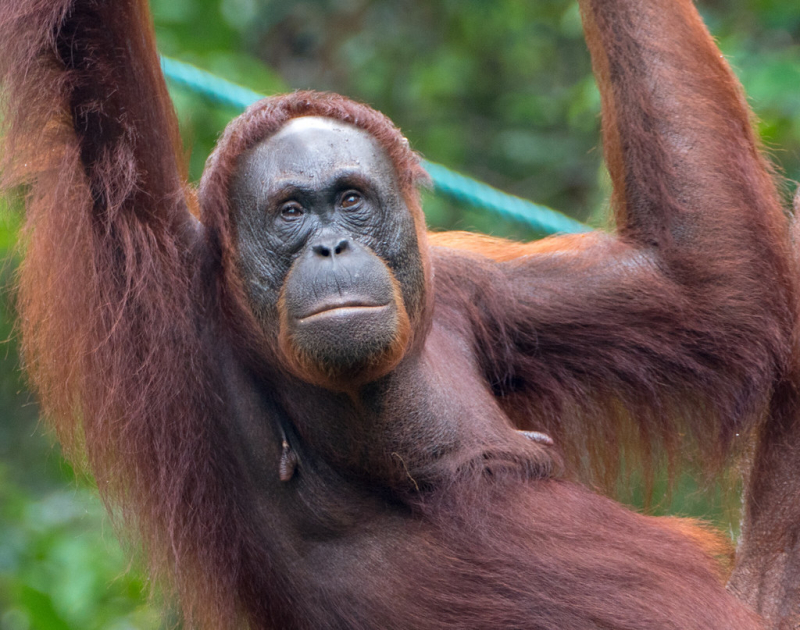
Photo: flickr -
One of the interesting facts about orangutans is, Birut Galdikas, a primatologist, saw orangutans using tools in ex-captivity groups. It has been observed that orangutanss in Suaq Balimbing have developed a toolkit for foraging that includes both insect-extraction sticks for use in tree hollows and seed-extraction sticks for gathering seeds from fruit with stiff husks. The orangutans changed their tools depending on the activity at hand, and they preferred using their mouths as tools. This predilection was also discovered in a study using orangutans kept in captivity. Catfish have been seen to panic and flop out of ponds into the hands of waiting orangutans when they are jabbed with sticks by the apes. It has also been observed that orangutans store tools for later use. Orangutans choose branches that can sustain their body weight and appear to have some technical construction skills while building a nest.
There have been reports of wild orangutans in Tuanan, Borneo, using sonic communication instruments. The kiss squeak noises they make are amplified by leaves. The apes may use this technique of amplification to trick the listener into thinking they are more powerful creatures. Using the same behavioral coding technique, researchers from six separate orangutan field locations compared the behaviors of the animals at each site in 2003.
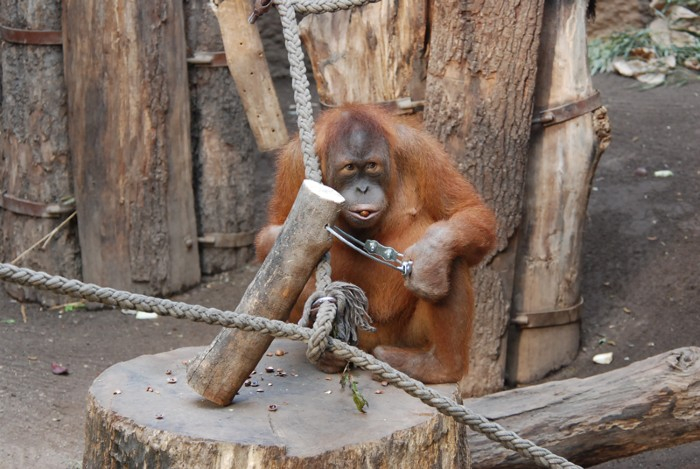
Photo: nature 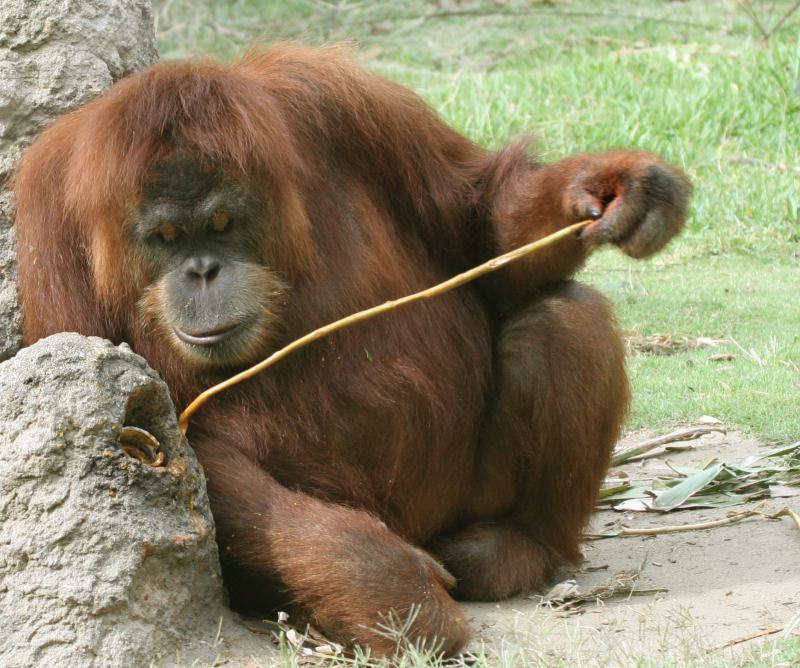
Photo: commons.wikimedia.org -
In the past, orangutans were widely distributed throughout South East Asia and even into what is now southern China. The orangutans were able to travel freely across great distances because the majority of the land was previously covered by enormous, continuous rainforest regions.
The undisturbed rainforest now only exists in a relatively small percentage of intact areas due to logging and human growth. Due to human impact, orangutan populations are declining. The three main human-caused threats are poaching, fires, and forest damage. The majority of Asia's natural woods have vanished. Cities, communities, and palm oil plantations have taken their place. As the forest businesses unlawfully clear the trees without the permission of the government or the local populace, who depend on the forest for their subsistence, vast regions are also disappearing.
Burning the land first is a frequent practice while establishing plantations. These deliberate fires have frequently escalated out of control throughout the years, wreaking massive havoc in their wake. The fires kill a lot of orangutans since they have little way of escaping. Another barrier to the orangutan's continued existence is poaching. While the flesh from the adults is consumed, the newborns are marketed as exotic pets. Even though it is forbidden to kill, capture, or sell orangutans, it nevertheless happens frequently, making it incredibly challenging to resolve the issue.
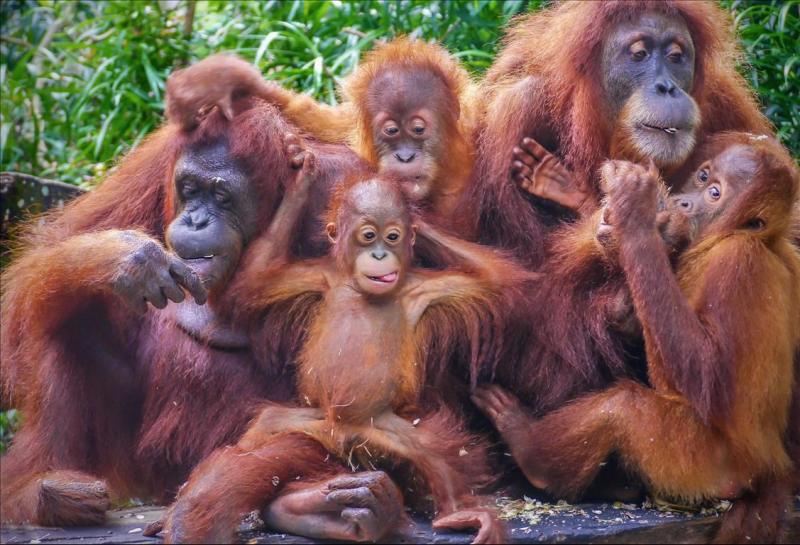
Photo: menafn 
Photo: worldwildlife































